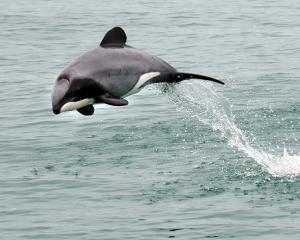While the noise effects from dredging Otago Harbour are likely to be minor, operational noise from extending the multipurpose wharf might increase gradually in Careys Bay, acoustic consultant Keith Ballagh says.
Port Otago's resource consent application, including extending the multipurpose wharf by 135m as part of its Project Next Generation project, is being heard in Dunedin this week.
Mr Ballagh, giving evidence for Port Otago, said if the larger vessels expected to use the deeper channel were berthed at the extended wharf, there would be a small reduction in noise at Port Chalmers but a gradual increase in noise at Careys Bay over time as cargo volumes increased.
"This would require up to 12 houses in Harbour Tce to be included in the sound insulation programme."
Two or three of the homes could be in the zone which could require upgrading of the dwellings or an offer to purchase them, as set out in the port noise management plan, he said.
However, if the new larger vessels used the George St container terminal wharf, there would be no discernable change in noise effects.
While dredging would be a 24-hour activity, with similar noise levels at night as during the day, there were times when noise would exceed the New Zealand standard, but that would be limited to a few periods for a limited number of nights, Mr Ballagh said.
"The nature of the noise would be similar to existing noise sources such as shipping and is therefore less likely to be disturbing."
The Careys Bay Association's concerns present "unacceptable" noise levels would increase significantly had been taken into account and levels at Deborah Bay were not likely to increase, he said.
"I am confident the noise model I have used to predict noise levels is well founded and covers their area of concern."
Associate Prof Keith Probert said his evidence established the baseline benthic (the seabed and the organisms that live there) environment in Otago Harbour.
The harbour contained an important range of sheltered intertidal and shallow sub-tidal benthic habitats of rocky and sediment substrata not widely represented elsewhere, he said.
Surveys of the lower harbour indicated a complex habitat patchwork, though supporting essentially one main community type of sediment-dwelling invertebrates.
"The information now available ... is considered to provide an adequate basis to assess effects ... of dredging."
CPG New Zealand marine and coastal engineer Maurice Davis, a former Otago Harbour Board chief engineer, said dredging of the harbour began in 1868 and had been carried out continuously for more than 140 years.
During that time, about 34.1 million cu m of material was removed, with about 51% of this disposed of at sea.
Undertaking dredging incrementally had meant improvements over a period of time, he said.
"I am not aware of any feedback having been received in relation to adverse effects from this work."
Periodically, dredging would be required to maintain the depth and alignment of the channels required for safe navigation of ships, he said.
"Dredging has been and will always remain an important part of Port Otago's operations."












